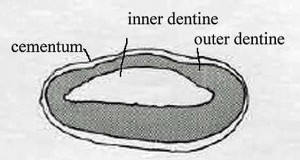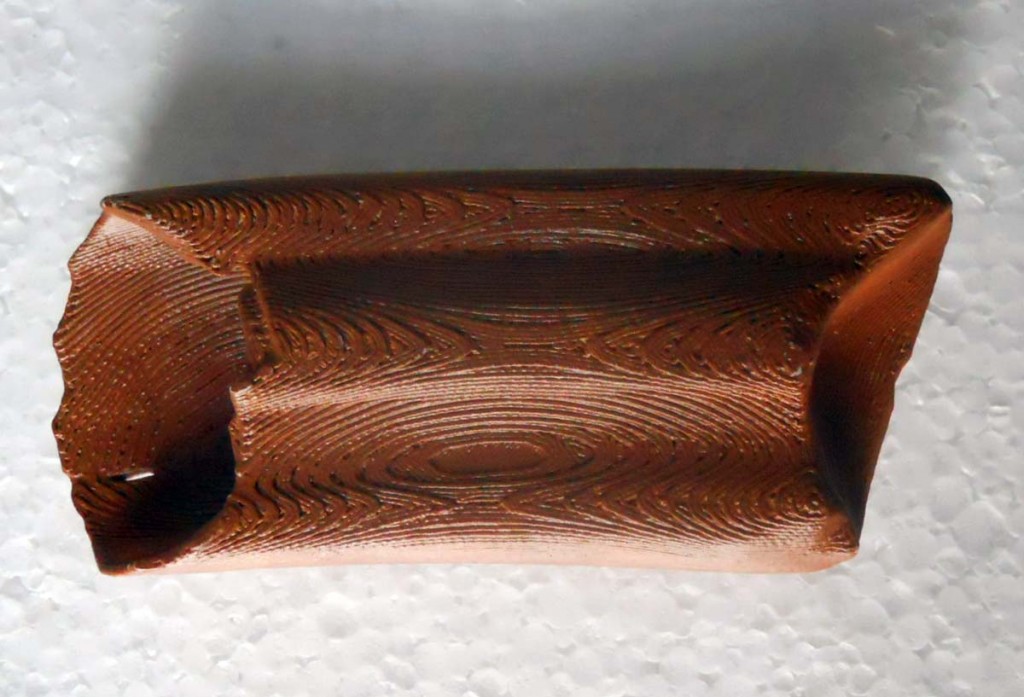Introduction to Walk Like a Sloth: lessons in ground sloth locomotion
 Getting Oriented
Getting Oriented
This caniniform tooth (“in the form or shape of a canine”) is from the sloth’s lower right jaw or mandible. The sloth had four (4) caniniforms (sometimes called “tusks”)–two (2) on the bottom and two (2) on top. Slip the tooth out of its alveolus (socket). The occlusal surface (top, biting surface) is smooth and slopes toward the tongue or lingual side and away from the outside or labial side. The root is open because this tooth is ever-growing. We can’t show you with the plastic prototype, but the tooth is composed of two layers of dentine covered with an outer layer of cementum. The dentine layers are soft and wear away more quickly than the hard cementum layer as the sloth chews, leaving a hard raised edge for cutting.


